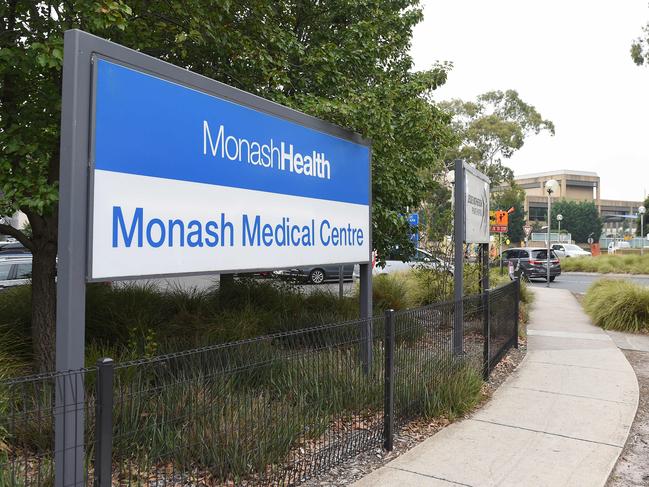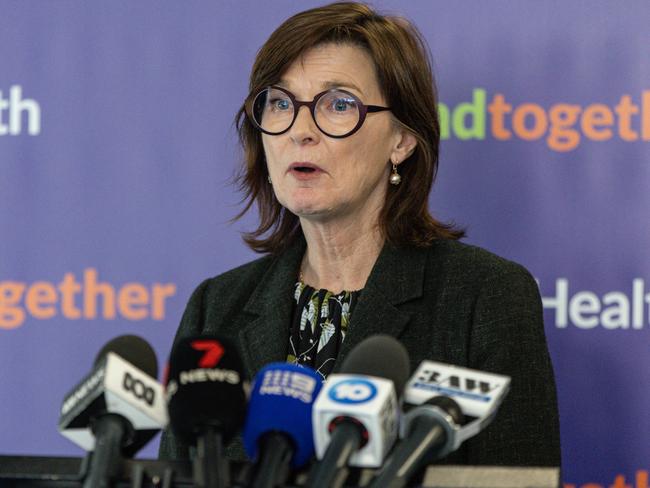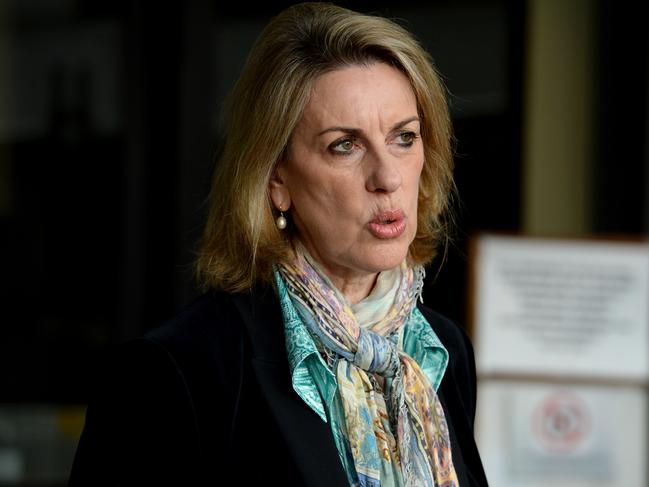Victorian hospitals in financial crisis with deficits of more than $1bn
Some of Victoria’s busiest hospitals are facing a major cash shortfall with annual reports tabled in parliament revealing more than $1bn in deficits.
Victoria
Don't miss out on the headlines from Victoria. Followed categories will be added to My News.
The state’s hospitals faced record shortfalls last fianncial year tallying more than a $1bn in deficits across the state.
Data revealed in annual reports for 2023-24 tabled in the Victorian parliament revealed the extent of thevfinancial crisis thatt the 68 hospitals across the state were facing.
The worst affected was Monash Health which reported deficits of $321,278,000.
Followed by Northern Health with deficits of $115,791,000, Western Health $104,509,000 and Eastern Health $100,043,000.

Regional facilities suffering also included Peninsula Health clocking a deficit of $59,122,000, Albury Wodonga Health $52,419,000 and Grampians Health $46,870,000.
The Royal Women’s Hospital recorded a net deficit of $800,000 and warned that “growing demand has put additional pressure on the Women’s budget”.
The Royal Children’s Hospital operated at a deficit but revealed it was able to buffer ongoing debts by finding $10 million in savings including better organising their workforce to avoid paying penalty rates.
The stunning data was revealed after the 68 Victorian hospitals failed to publish their annual reports on time as the sector grapples with funding challenges and major reform from the Allan government.
The delay was due to financial statements being signed off by the Victorian Auditor-General’s Office (VAGO) as hospitals grappled to administer their new budgets.
In August, the Allan administration revealed its eagerly awaited Health Services Plan, which could force consolidations of health services as a part of a comprehensive reform of the state’s healthcare system.
Although the government dismissed this primary suggestion, health services are now contending with funding models that they worry might lead to mergers, even with the government’s extra $1.5bn funding that was announced at the eleventh hour when hospitals warned services would need to be cut.

On Thursday, Health Minister Mary-Anne Thomas batted away concerns about hospital finances.
“What matters most to Victorians is the performance of our public health service system,” she said.
“And, I’m really proud of the fact that in the last financial year, we saw more planned surgeries delivered in Victoria than ever before, 209,000 planned surgeries.
“And importantly, almost every category one surgery was performed within the clinically recommended time of 30 days or less. Not only that, every category one emergency department presentation was seen immediately. I’m very proud of the work that our healthcare workers continue to deliver and do so the work that they do and the care that they continue to deliver every single day.”
Opposition health spokesperson Georgie Crozier said the reports showed the state’s hospitals were in the midst of a “cash crisis”.

“The Allan Labor government can find tens of billions of dollars for a new train line from Cheltenham to Box Hill but cannot find the money to pay doctors and nurses on time – their priorities are all wrong,” she said.
“Labor’s financial mismanagement and record debt is starving funding from Victoria’s hospitals and means poorer health outcomes for Victorian patients.”
Some annual reports showed that hospitals were operating multiple days without any cash in the bank.
One regional service ran for seven days in a negative position.
The Peter MacCallum Cancer Centre had half a day’s cash in the bank.
A spokesman from the centre said: “This end of year result had no impact on the care provided to patients.”
Many regional hospitals were operating with less than two days cash on hand including: Monash Health, Northern Health, West Gippsland and Western Health.
The Alfred had a target of operating with 14 days of cash on hand but only averaged 8 days.
However, positively the hospital was able to acheive 11,009 elective surgeries on the waitlist.
Australian Medical Association Victoria President Dr Jill Tomlinson said: “these figures show the difficult task at hand for the health services and our leadership teams in keeping to strict budgets in the business of healthcare, where the unpredictable happens every day”.
“There’s been significant change in the way that the health service budgets are set and managed in Victoria, and that these cash figures give insight into the significant challenges faced by health service and leadership in balancing the service delivery with activity based funding.”
The government dumped a swathe of health reports on Thursday which also included Ambulance Victoria, which revealed that ongoing industrial action has cost Athe agency $17 million in lost transport fees.
The alarming cost to the already struggling agency was revealed in the annual report, tabled in the Victorian Parliament on Thursday.
A new wage deal was struck with the Allan Government after 17 months of negotiations with the Allan government, at a costof $600m to taxpayers.
The report revealed that in 2023-2024 transport fees accrued $202.4 million in the past 12 months, down from $219.5 millionthe year before which was attributed to “protected industrial work bans on eligible union members taking billing details frompatients”.
The report also revealed that Ambulance Victoria was failing to meet critical targets with the service facing “record demand”.
The statement issued by Shelly Park board chair, and Anthony Carlyon acting CEO outlined the challenging year.
“We have seen an increased demand on the health system overall, which has impacted our people and our ability to provide themost timely response to the community,” it said.
“We also acknowledge that negotiations on a new enterprise agreement for our operational workforce took far longer than desired,impacting the relationships and trust we value so highly.
“Throughout the year we faced record demand for emergency care, responding to 1,092,818 incidents across Victoria by roadand in the air, while our Triage Services managed 310,173 phone calls.”
“We reached 66.3 per cent of Code 1 cases within 15 minutes - below the statewide target of 85 per cent – but higher thanour performance last year.”
However some targets were met with average Code 1 response times bing 15 minutes and 10 seconds - a 47 second improvementon the previous year.


